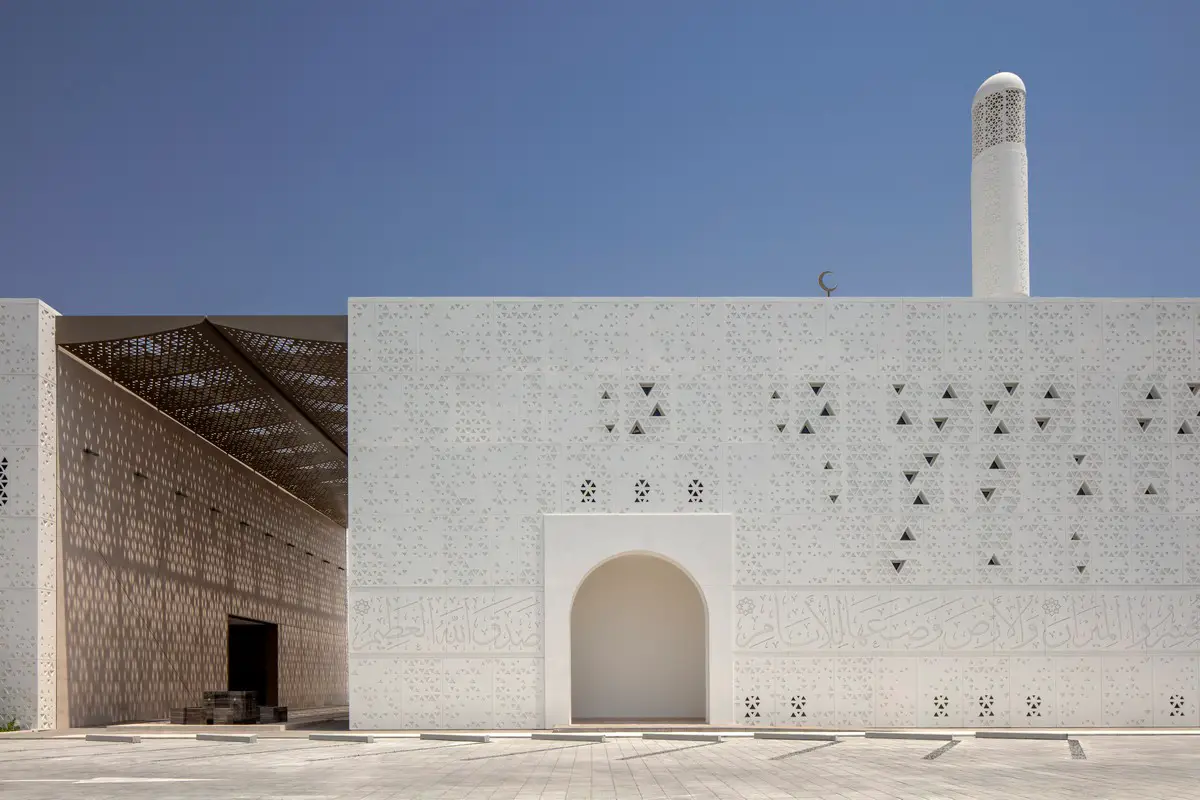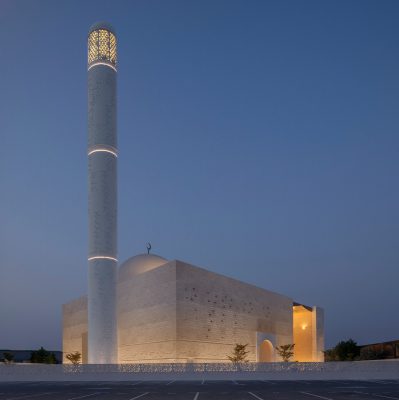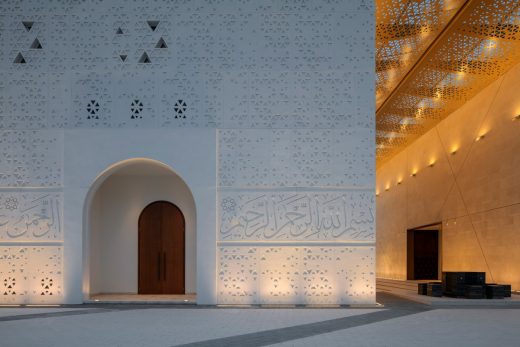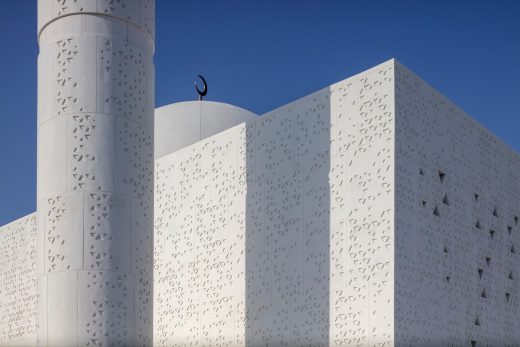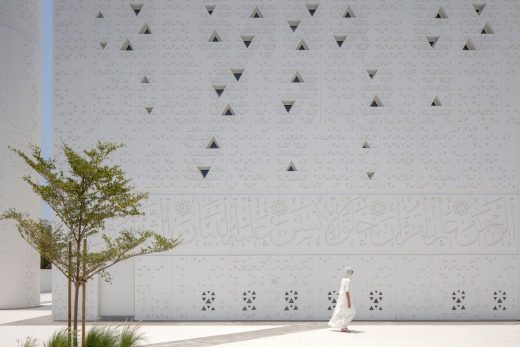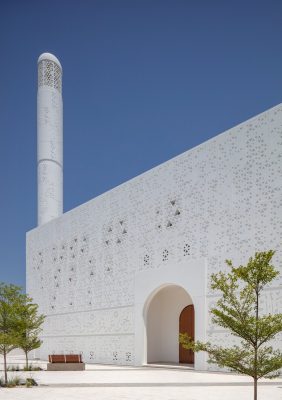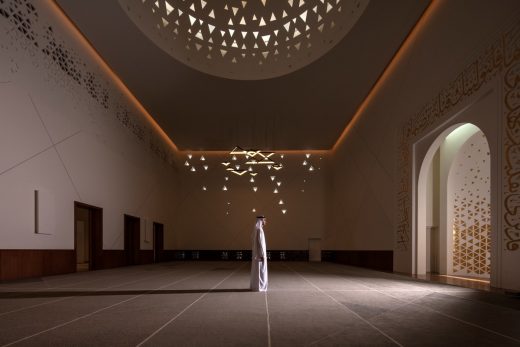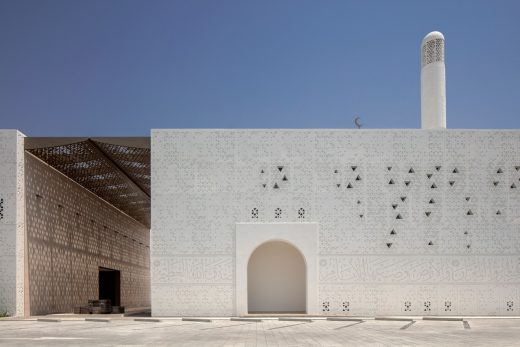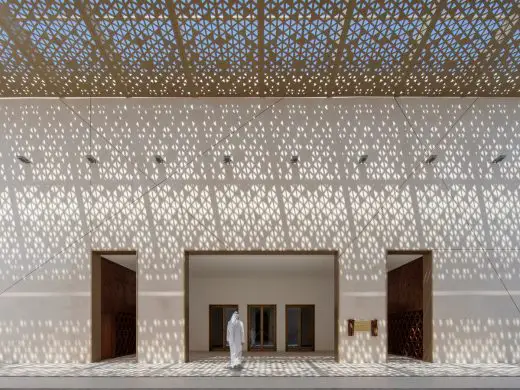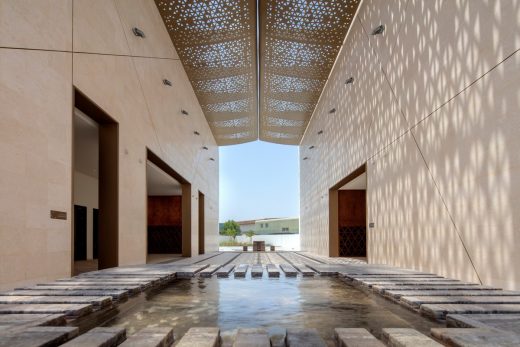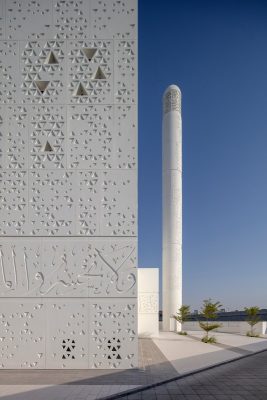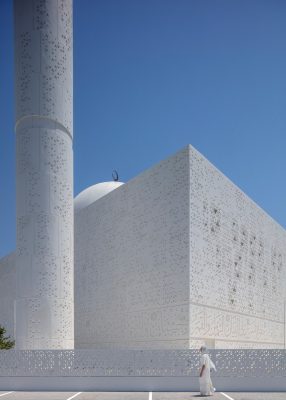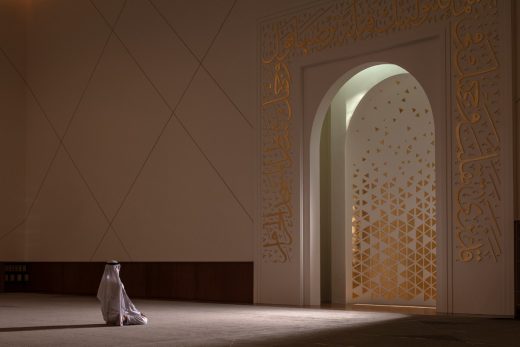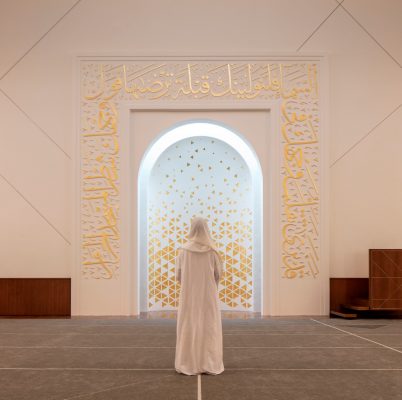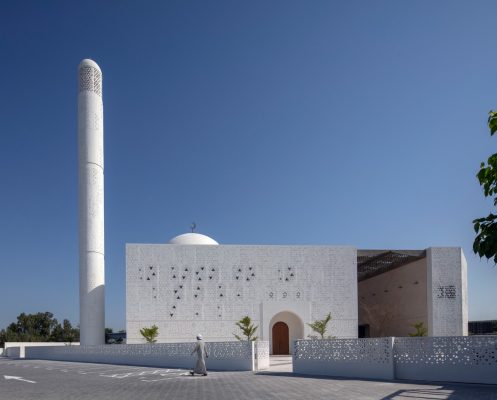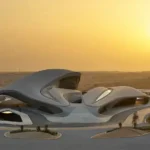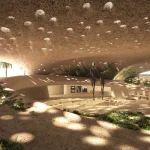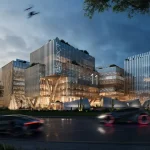Mosque of the Late Mohamed Abdulkhaliq Gargash Dubai, UAE Religious Building Photos, Architecture
Mosque of the Late Mohamed Abdulkhaliq Gargash, Dubai
21 September 2021
Design: Dabbagh Architects
Location: Um Suqeim Road, Al Quoz, Dubai, UAE
Mosque of the Late Mohamed Abdulkhaliq Gargash in Dubai
• A contemporary place of worship quietly masterful in its use of form, materiality and controlled natural lighting to create a sense of calm and spiritual connection
• A pared down form that eschews traditional Islamic typology, with a design narrative to transition the worshipper from the outer everyday world to an inner spiritual experience
• One of the first mosques in the UAE to be designed by a female architect
Mosque of the Late Mohamed Abdulkhaliq Gargash News
Dubai, United Arab Emirates – Dabbagh Architects lead by Principal Architect and Founder, Sumaya Dabbagh, completes the Mosque of the Late Mohamed Abdulkhaliq Gargash (Dubai, UAE), a contemporary place of worship that is quietly masterful in its use of form, materiality and controlled natural light to evoke a sense of calm and spiritual connection and transition the worshipper from outer material world to inner sense of being. The mosque is one of the first in the UAE to be designed by a female architect.
Sumaya is one of only a few Saudi female architects of her generation and amongst a handful of women architects leading their own practice in the Gulf region. With a reputation for crafting culturally relevant buildings in dialogue with their surroundings, she places emphasis on the intangible in architecture; seeking to create meaning and a sense of the poetic to form a connection with each building’s user.
Previous projects include Mleiha Archaeological Centre (2016), a curved sandstone structure that rises from the desert in the small town of Mleiha, a UNESCO World Heritage Site. The project was awarded an Architecture MasterPrize (2020), amongst other award wins, as well as being nominated for the Aga Khan Awards (2018). Creating a transition from outer material world to inner sense of being
As a gift to the community and in honour of the late patriarch of the family, Mohamed Abdulkhaliq Gargash, the Gargash family’s brief was to create a minimal contemporary mosque, a calm and spiritual space for prayer, for the community of the Al Quoz, the industrial heart of Dubai. Committed to supporting local industries and in keeping with the practice’s sustainable approach to design, Dabbagh Architects sourced materials from the mosque’s locality: stone from Oman; concrete, aluminium, cladding, joinery and ceramics from the UAE.
At the heart of the design approach is the enhancement of the act of worship and a transitional journey throughout the building so that the worshipper is ready for prayer and feels a sense of intimacy with the sacred.
“Creating a space of worship was a very particular design challenge. Prayer is a devotional act. It requires the worshipper to be totally present. With all the distractions in our modern busy lives it can be challenging to quieten the mind and find an inner calm to allow for full immersion into prayer,” says Sumaya. “Through the design, a series of spaces are created that allow the worshipper to transition from the busy outer world and prepare for an inner experience.”
Light as a tool to create a connection with the divine
Natural light is used as a tool to enhance a feeling of spirituality, the connection between the
earthly and the divine, and to mark the worshipper’s journey through the building. Scale also
plays a role in creating this sense of sacredness.
Starting at the mosque’s outdoor entrance, perforated shading creates a threshold of perforated light leading the worshipper to the ablution area where physical cleansing invites the clearing of the mind and preparation for prayer. The route continues through to a lobby space where further shedding of the material world takes place through the act of removing one’s shoes.
Once inside the prayer hall, the visitor further transitions to a contained space where reading from the Quran may take place before prayer. All the while, the quality of light from one space to another changes to enhance the preparation process, so that when the worshipper finally enters the main hall, they are ready for prayer.
“Muslim prayer is performed throughout the day at prescribed timings: at dawn, midday, afternoon, sunset and at night. This discipline creates a human connection with the natural day and night rhythm. The experience created through the design of the mosque seeks to enhance this connection through a controlled introduction of natural lighting,” explains Sumaya.
This is done in three ways: vertically, via the perforated dome to enhance the spiritual connection to the heavens, the shafts of light from the narrow openings on the sides further create a sense of illumination from the divine; indirectly, behind the Mihrab to highlight the point of focus in the prayer hall facing the direction of prayer; and, through a play of light from a series of small openings in the façade that follows the same decorative patterns of the interior.
Pared down form eschews traditional architectural typology
Dabbagh Architects sought to avoid multiple blocks, simplifying the traditional typology of the Islamic form and stripping it away to its essence. In the process of design development, the main building volume was separated into two: firstly, the prayer block containing the male and female prayer areas, and secondly the service block where the ablution facilities and residence for the Imam (the leader of prayer) and Moazen (caller of prayer) are found.
As a result of this division, a courtyard is formed which has a sculptural canopy reaching out to reconnect the two volumes together. With its two arms almost touching, the canopy gives a sense of separation of the functional and the more scared: the practicality of the ablution ritual and the spirituality of prayer. In further contrast to traditional mosque architecture, the minaret is designed as a separate volume.
A reinterpretation of Islamic geometry and metaphorically protective calligraphy The use of pattern and materiality in this project enhances the user’s experience as they journey from the outside into to the courtyard and enter the building. Throughout the building is a triangular pattern, a reference to traditional Islamic geometry but reinterpreted in a deconstructed contemporary language.
The exterior paneling uses this triangulated pattern in recessed and perforated elements, which gives the building’s skin a dynamic appearance. Internally, these perforations scatter natural light into the areas of worship with great control and care to illuminate the key spaces and create a calm atmosphere and sense of connection to the divine, as well as helping to cool the mosque’s interior.
The double skin dome also allows natural light to enter, filtering it through the internal decorative skin, which incorporates the same triangulated pattern as the rest of the building. This filtered light creates a soft naturally-lit prayer space tailoring to the introspective mind during prayer. The reinterpreted Islamic patterns and triangulated geometry harmonize throughout the interior as lines intersecting across walls, carpets and light fittings.
Calligraphy plays an important part in the overall design. A Surah (verse from the Quran) wraps around the prayer hall externally to create a metaphoric protective band signaling the spiritual nature of the space upon arrival and instilling a sacred energy throughout the building. The verse, “The Most Merciful”, is composed entirely in saj’, the rhyming, accent-based prose characteristic of early Arabic poetry and references the sun, the moon, the stars and heavens and many other creations.
“At the end of each project my hope is that the building will evoke the feelings and emotions that were envisioned at the outset. There is a defining, magical moment when the building is born and claims a life of its own. For this, my first mosque, that moment was particularly moving. I feel truly blessed to have had the opportunity to create a sacred space that brings people together for worship,” says Sumaya.
Mosque of the Late Mohamed Abdulkhaliq Gargash in Dubai, UAE – Building Information
Location: Um Suqeim Road, Al Quoz, Dubai, UAE
Completion date: 30.06.2021
Site Area: 3731.27 m2
Total BUA: 1680 m2
Classification: Juma’a (Friday) Mosque*
Lead architects: Dabbagh Architects – Sumaya Dabbagh, Sandrine Quoilin, Aleks
Zigalovs, Hana Younes, William Java
Structure engineers: Orient Crown Architectural
MEP Engineers: Clemson Engineering
Landscape Architects: WAHO Landscape Architecture
Client: Family of the late Mohamed Abdulkhaliq Gargash
Height Ground + 1
Structure: RC Concrete
Cladding: GRC Cladding
Canopy: Aluminium Canopy on Steel Support Structure
Joinery: Wood Veneer/HPL/Solid Wood/Solid Surface
*Mosque design in the Emirate of Dubai is governed by the Islamic and Charitable Affairs
Department. Mosques are classified by size into categories, Juma (Friday) Mosque is a medium
size mosque with a capacity of approximately 1000 worshippers. It is used for daily as well as
Friday prayers. The mosque is required to house on site an Imam (the leader of prayer) and
Moazen (the caller of prayer).
Sumaya Dabbagh
About Sumaya Dabbagh RIBA, Principal, Dabbagh Architects
Saudi architect Sumaya Dabbagh founded Dabbagh Architects in Dubai, UAE in 2008. The practice
sets out to create contemporary architecture that is culturally and environmentally sensitive: a
timeless architecture that creates a positive impact on the world.
Following an education in Architecture at Bath University, UK (BSc and BArch, 1990), Sumaya
began her career in London and Paris in the early 90s. Her return to the Gulf region in 1993 was
part of a quest to gain a deeper understanding of her own identity, a unique mix of influences
and sensitivity towards both western and middle eastern cultures.
Through her work in architecture and design in the Gulf region, Sumaya aims to bridge cultural
and gender gaps and has broken stereotypes and limiting beliefs about Saudi Arabia, the Gulf,
and Arab Women. As one of the few Saudi women of her generation to train as an architect and
one of the first women in architecture to found their own practices in the UAE, Sumaya is an
example of what women can achieve and how much they can influence change. In 2019 she won
the Principal of the Year Award at the Middle East Architects Awards and became a finalist at The
Tamayouz Award for Women of Outstanding Achievements.
Sumaya is passionate about bringing more awareness to the region on the value of a sensitive
and sustainable approach to design. As one of the first RIBA Chartered Practice in the Gulf
region, Dabbagh Architects is known for its quality-driven design and the practice undertakes
diverse sectors, such as commercial, residential, educational, as well as cultural projects.
The Mleiha Archaeological Centre (2016) is globally recognized as a significant example of a new
emerging approach to architecture in the UAE and won multiple awards including a prestigious
Architecture Master Prize (2020) and Agha Khan Awards (2018) nomination. Gargash Mosque
(2021) is a recent addition to Dabbagh Architects’ portfolio of sensitive, contextual designs.
Currently the practice is working on new prestigious cultural projects such as Al Ain Museum
(2023) and other projects in Saudi Arabia. The practice’s projects were showcased in RIBA/d3
Dubai Festival of Architecture’s “Emerging Architecture in the Gulf” exhibition during Dubai
Design Week 2020.
All content by Dabbagh Architects
Photography by Gerry O’Leary Photography
Video by Intelier
www.dabbagharchitects.com
LinkedIn: Dabbagh Architects | Instagram: @dabbagharchitects_
Mosque of the Late Mohamed Abdulkhaliq Gargash images / information received 200921 from Dabbagh Architects
Location: Um Suqeim Road, Al Quoz, Dubai, UAE
UAE Mosque Buildings
United Arab Emirates Mosque buildings
Sheikh Zayed Bin Sultan Al Nayhan Mosque, Abu Dhabi
Spatium
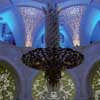
photograph : Speirs and Major Associates
Abu Dhabi Mosque Building
WTC Mosque, World Trade Center, Abu Dhabi, UAE
Design: AL_A architects
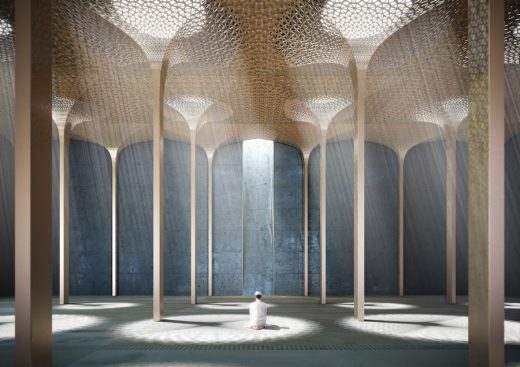
image from architect
WTC Mosque Abu Dhabi
Middle East Mosque building design
AlJabri Mosque in Ha’il, Saudi Arabia
Design: Schiattarella Associati architects
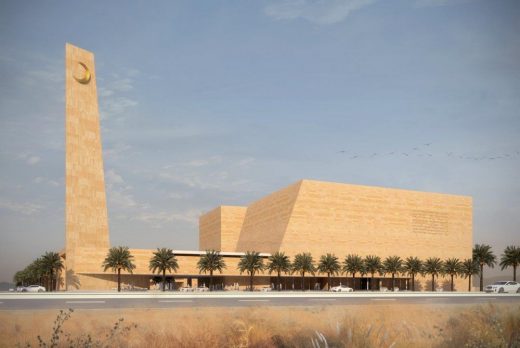
image from architects
AlJabri Mosque Building in Ha’il
Dubai Architecture
Al Seef Dubai Creek Master Plan
Architects: GAJ (Godwin Austen Johnson)
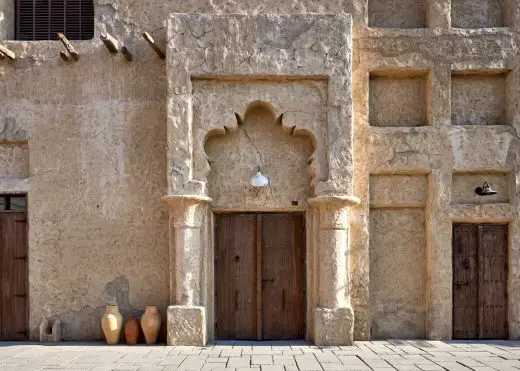
photograph : Chris Goldstraw
Al Seef Dubai Creek
Dubai Architecture Tours by e-architect
Design: Zaha Hadid Architects
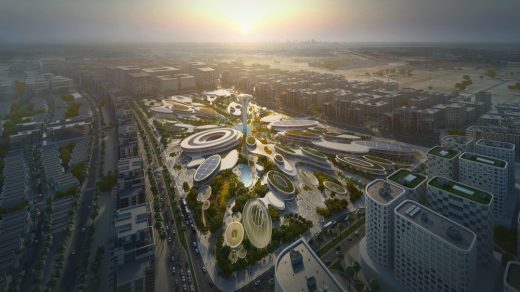
image courtesy of architects
Aljada Sharjah
Sharjah Architecture Triennial
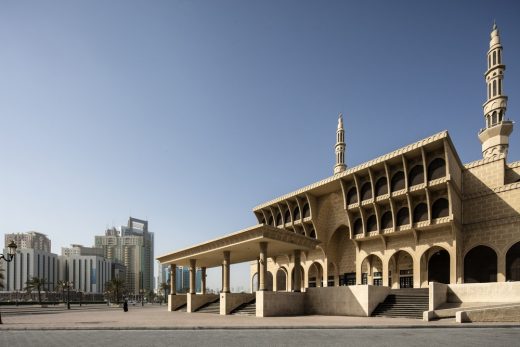
photo : Ieva Saudargaitė
Sharjah Architecture Triennial News
Architects: 10 DESIGN
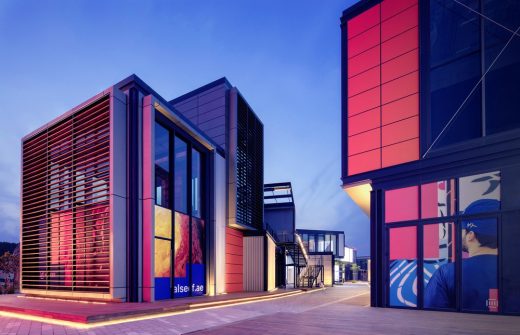
photograph : Gerry O’Leary
Al Seef Dubai Project
Design: EDGE Architects
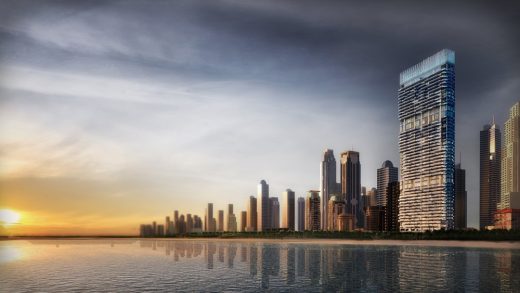
image courtesy of architects
1/JBR Tower Dubai
Comments / photos for the Mosque of the Late Mohamed Abdulkhaliq Gargash page welcome

